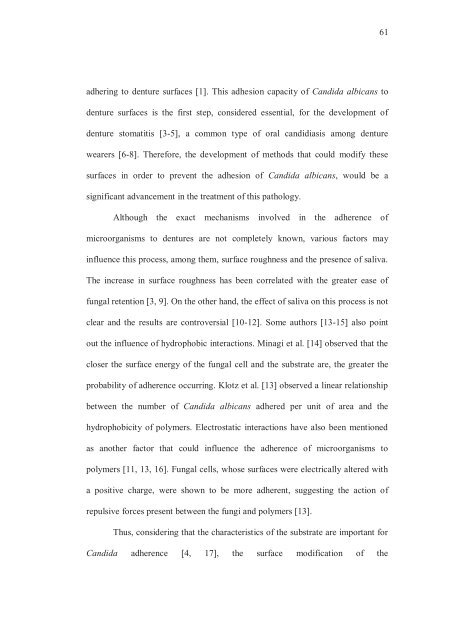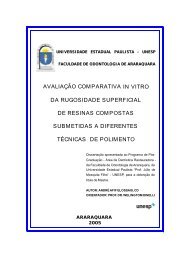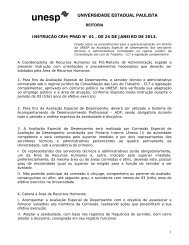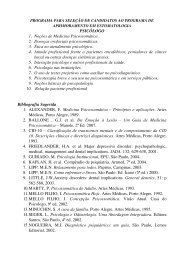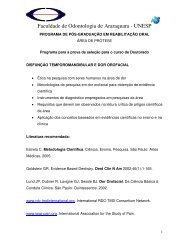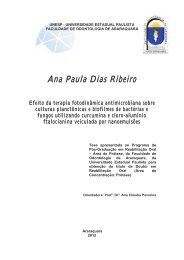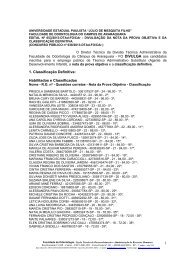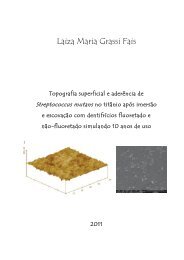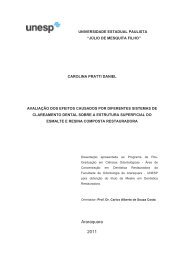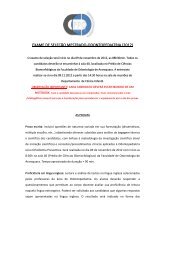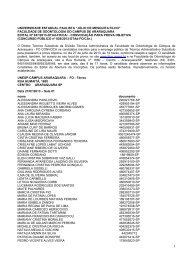universidade de são paulo - Faculdade de Odontologia - Unesp
universidade de são paulo - Faculdade de Odontologia - Unesp
universidade de são paulo - Faculdade de Odontologia - Unesp
You also want an ePaper? Increase the reach of your titles
YUMPU automatically turns print PDFs into web optimized ePapers that Google loves.
61<br />
adhering to <strong>de</strong>nture surfaces [1]. This adhesion capacity of Candida albicans to<br />
<strong>de</strong>nture surfaces is the first step, consi<strong>de</strong>red essential, for the <strong>de</strong>velopment of<br />
<strong>de</strong>nture stomatitis [3-5], a common type of oral candidiasis among <strong>de</strong>nture<br />
wearers [6-8]. Therefore, the <strong>de</strong>velopment of methods that could modify these<br />
surfaces in or<strong>de</strong>r to prevent the adhesion of Candida albicans, would be a<br />
significant advancement in the treatment of this pathology.<br />
Although the exact mechanisms involved in the adherence of<br />
microorganisms to <strong>de</strong>ntures are not completely known, various factors may<br />
influence this process, among them, surface roughness and the presence of saliva.<br />
The increase in surface roughness has been correlated with the greater ease of<br />
fungal retention [3, 9]. On the other hand, the effect of saliva on this process is not<br />
clear and the results are controversial [10-12]. Some authors [13-15] also point<br />
out the influence of hydrophobic interactions. Minagi et al. [14] observed that the<br />
closer the surface energy of the fungal cell and the substrate are, the greater the<br />
probability of adherence occurring. Klotz et al. [13] observed a linear relationship<br />
between the number of Candida albicans adhered per unit of area and the<br />
hydrophobicity of polymers. Electrostatic interactions have also been mentioned<br />
as another factor that could influence the adherence of microorganisms to<br />
polymers [11, 13, 16]. Fungal cells, whose surfaces were electrically altered with<br />
a positive charge, were shown to be more adherent, suggesting the action of<br />
repulsive forces present between the fungi and polymers [13].<br />
Thus, consi<strong>de</strong>ring that the characteristics of the substrate are important for<br />
Candida adherence [4, 17], the surface modification of the


